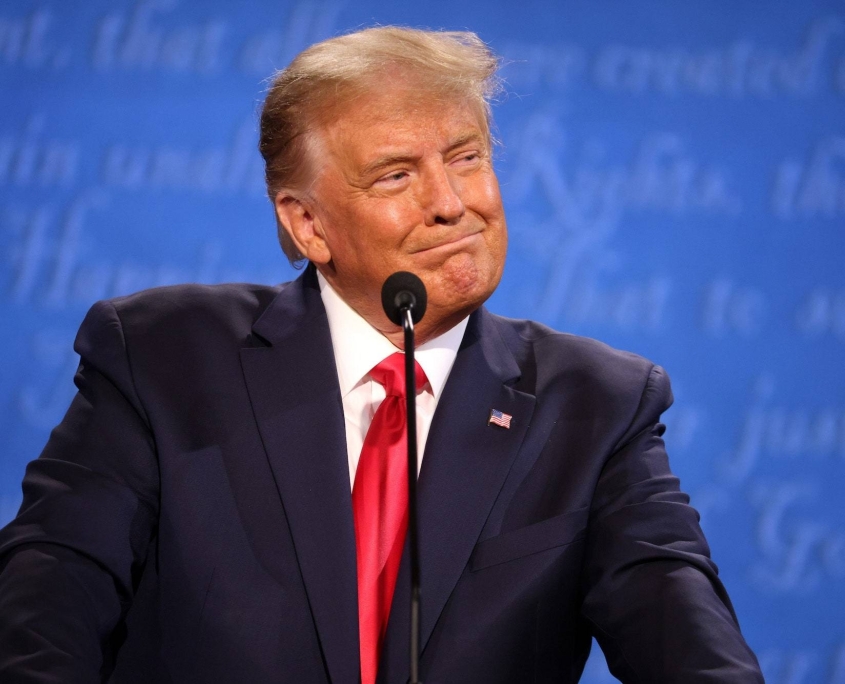The Gains and Losses of Trump’s Tariff Policy: An Economic War That Hurt America Itself
In modern American political history, Donald J. Trump stands out as one of the most controversial presidents.
Elected in 2016 under the slogan “Make America Great Again”, he successfully captured the support of blue-collar workers and traditional manufacturing states.
However, after his four-year term ended, analysts began to reexamine his signature policy — the “tariff war.”
Was this campaign of America First a path to national revival, or a costly act of self-inflicted damage?
I. From Free Trade to Tariff Protectionism
Since World War II, the United States has been the main promoter of the global free trade system and the architect of the modern economic order.
Trump, however, overturned this decades-old tradition.
He argued that globalization and free trade had hollowed out America’s industries, cost millions of jobs, and allowed countries like China, Mexico, and the EU to profit at America’s expense.
Under this “America as a victim” narrative, Trump wielded tariffs as his chief weapon in an unprecedented trade war.
Beginning in 2018, the U.S. imposed tariffs on China, the EU, Canada, and Mexico, covering steel, aluminum, electronics, automobiles, and even consumer goods.
He famously declared, “Trade wars are good, and easy to win.”
History has since proven that statement to be overly optimistic.
II. The Real Motives Behind the Tariff War
On the surface, the tariffs were meant to reduce trade deficits, punish unfair trade practices, and bring manufacturing back home.
In reality, it was also a political maneuver:
Trump understood the resentment of blue-collar Americans who felt abandoned by globalization, and the tariff war appealed directly to that anger.
From an electoral perspective, it was effective.
The image of Trump as an “anti-globalization hero” solidified his base in the industrial heartland.
Yet political gain did not translate into economic success.
III. The Economic Fallout: Hurting America More Than Its Rivals
Although designed to strike foreign competitors, the tariffs inflicted deeper wounds on America’s own economy.
1. Rising Costs for U.S. Industries
Tariffs on imported raw materials forced American manufacturers to pay higher prices for steel, aluminum, and components.
Industries like automotive, machinery, and electronics faced cost increases of 10–20%, leading many firms to cut investment and jobs.
2. Agriculture as the Biggest Casualty
China’s retaliatory tariffs on U.S. soybeans, corn, and other farm goods devastated America’s Midwest.
Exports plummeted by as much as 70%, prompting Washington to spend tens of billions in subsidies to pacify angry farmers.
3. Consumers Bear the Burden
According to the U.S. Congressional Budget Office (CBO), nearly 90% of the tariff costs were ultimately paid by American consumers and businesses.
In effect, the policy that was supposed to “punish China” ended up becoming a tax on Americans themselves.
IV. The Limited Return of Manufacturing
Trump’s central promise was to “bring back manufacturing to America.”
Yet the results were underwhelming.
Data from the Bureau of Labor Statistics and Pew Research Center show that between 2016 and 2020, U.S. manufacturing added only about 500,000 jobs — modest growth compared with previous recoveries.
Many multinational companies did shift operations out of China, but most went to Vietnam, Malaysia, or Mexico — not back to the United States.
High labor costs, strict regulations, and environmental standards continue to undermine America’s industrial competitiveness.
Tariffs did little to fix these structural issues; they merely masked the symptoms temporarily.
V. Diplomatic Consequences: America’s Credibility Erodes
Trump’s unilateralism also damaged the U.S. image abroad.
He withdrew from the Trans-Pacific Partnership (TPP), the Paris Climate Agreement, UNESCO, and even threatened to leave the World Trade Organization (WTO).
While such moves fit his “America First” rhetoric, they weakened America’s role as a global leader.
The United States, once a rule-maker, began to be seen as a rule-breaker.
This drove Europe and Asia to strengthen their own partnerships — such as the RCEP and China-EU Investment Agreement — gradually reducing reliance on the U.S.-centric trade system.
VI. Political Victories vs. Economic Realities
In the short term, the tariff war gave Trump political capital.
It reignited a sense of national pride and made “Made in America” a popular slogan.
But economically, it amounted to a symbolic victory:
-
The trade deficit barely shrank;
-
Manufacturing failed to return;
-
Global supply chains became more fragmented;
-
U.S. alliances were weakened.
Perhaps most importantly, the world began to see that America might no longer be the defender of free trade, but the biggest source of uncertainty.
VII. Conclusion: The Gap Between Toughness and Competence
Donald Trump possessed remarkable political instincts.
He skillfully tapped into the frustrations of those left behind by globalization and dared to challenge the established global order.
However, his lack of coherent economic strategy and diplomatic coordination turned the tariff war into a costly and ineffective experiment.
He awakened America’s nationalist spirit, but failed to deliver a sustainable plan for renewal.
His boldness made the world take notice of America again — but also made it wary.
In the end, history may remember Trump as the president who challenged globalization,
but not necessarily as a competent economic leader.


Leave a Reply
Want to join the discussion?Feel free to contribute!